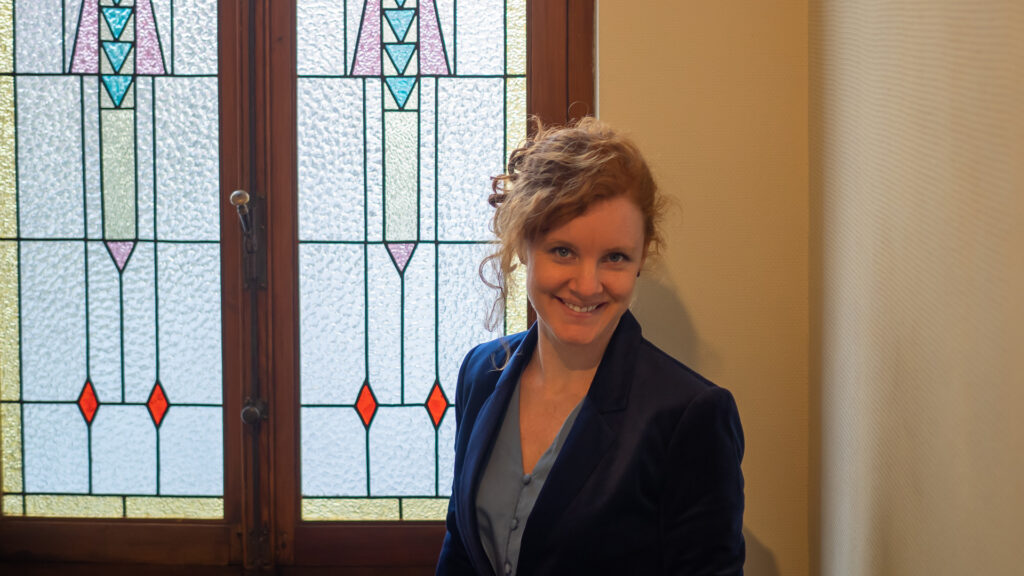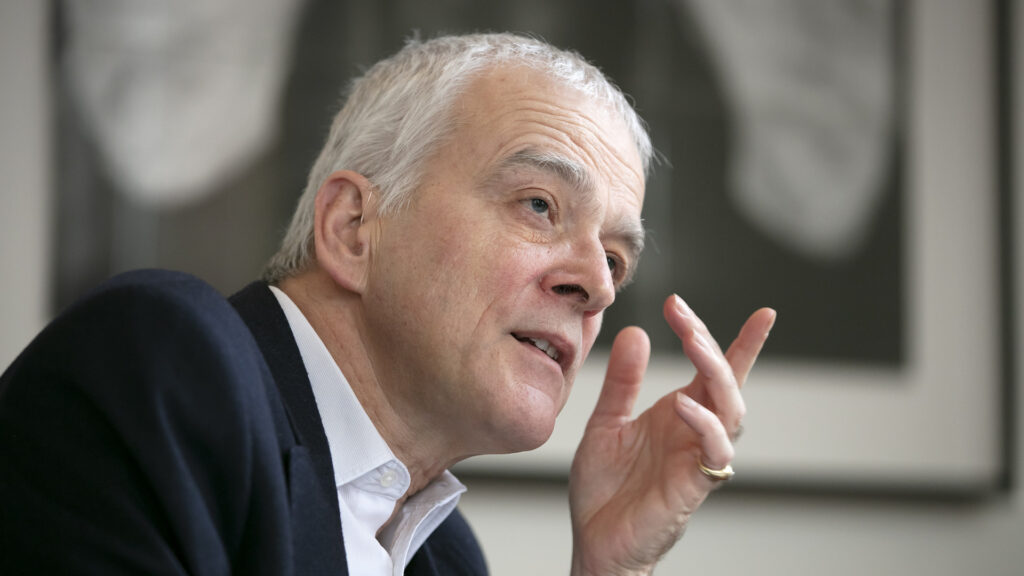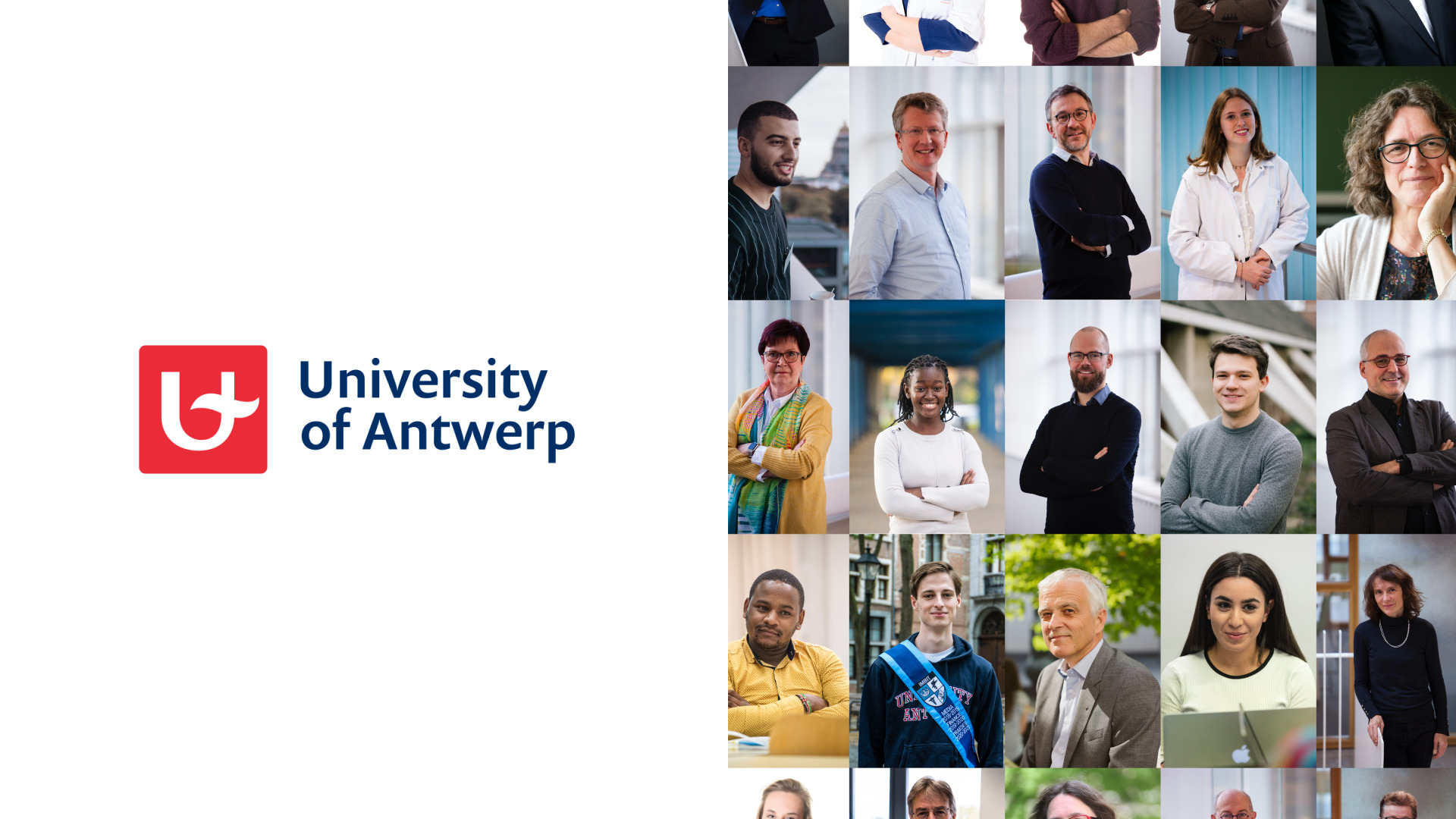‘Impact on the world, connection, innovation and quality: these are our core values and we want to shine an extra spotlight on them’, says Rector Herman Van Goethem. This sharper focus also serves as the foundation for the new house style. A double interview with the rector and Elisabeth Vanhoutte, head of the Communications Department.
Our university regularly commissions brand recognition surveys. The last survey in 2019 showed that we are not doing badly at all compared to other universities.
Professor Herman Van Goethem: ‘Still, our profile could be stronger. We are a strong brand, but the important thing is to market ourselves that way.’
Elisabeth Vanhoutte: ‘If we want to grow, we have to do so from a clearly defined position, and decide exactly which values we want to represent us. Otherwise, the picture is less clear. But for an organisation that is actually characterised by a diversity of viewpoints, that’s no simple task.’
That’s why a positioning exercise was carried out last year. What did that involve?
Van Goethem: ‘We partnered with Reputations, a market research agency that specialises in education. After a number of sessions with myself and my policy team, a survey was conducted among our staff, researchers, students, alumni and external stakeholders, such as Antwerp city council, UZA and the port. Just under 8700 people completed the questionnaire.’
Vanhoutte: ‘That’s how we ended up with dozens of values associated with our university, ranging from our international character to the fact that we have a close relationship with our students. In the end, we narrowed it down to four core values: impact on the world, connection, innovation and quality. These are values that are deeply embodied in our policy vision and which also have potential if we want to stand out more.’
Is there one value that stands out for you?
Vanhoutte: ‘Most important of all is our desire to have an impact on the world, our ambition as a university to improve society in a sustainable way. That’s why we get out of bed in the morning, so to speak.’
Van Goethem: ‘That’s what really drives us, even more so than at other universities. Projects like the Big Corona Study and CurieuzeNeuzen make that clear. We encourage our researchers and students to look critically at societal issues and to take their place in the public sphere. Market research confirms that our university is closely associated with that.’

What exactly is meant by connection?
Van Goethem: ‘Connection is crucial for a university located in a city with metropolitan characteristics. In fact, we are the lab of the metropolis. We can respond to the needs of the region and drive innovation. But inside our university, too, we want to connect and encourage cooperation among faculties. This translates into interdisciplinary programmes, such as our Think Water Advanced Master programme and the Master in Safety Sciences. And then there’s connection with other universities, including through YUFE (Young Universities for the Future of Europe) and the Lifelong Learning project with Ghent University and the VUB.’
Quality is also an important pillar.
Van Goethem: ‘Yes, we score very high in terms of both research and teaching. In the international rankings we are now in the top 200. We are a leading university in numerous research domains: vaccine research, sustainable chemistry, management, social equality… One of our great strengths in terms of education is that we’ve managed to retain the rather small-scale approach we had before the merger. There’s no big gap between our professors and their students.’
‘Rather than a shift or change I would say a sharper focus. These values have long been central to our organisation, as projects like CurieuzeNeuzen illustrate. It’s now a question of translating these four values for different target groups, such as students and researchers.’
Elisabeth Vanhoutte, head of the Communications Department
The fourth core value you chose was innovation. Why?
Van Goethem: ‘Innovation is a very high priority for us as a university, with pioneering projects such as Vaccinopolis, which is now under construction, and the Shavatar and Medimundi spin-offs launched last year, to name but a few. Breaking down barriers is crucial. By sitting down with companies, entrepreneurs and policymakers, our researchers often arrive at multidisciplinary solutions to problems. A good example of such a collaboration is The Beacon, a hub for developing Internet of Things solutions.
The ‘innovation’ value and our ambition to change the world leads us to adopt a creative approach, ‘original thinking and doing’, in our communication – a daring approach, so to speak. It suits us perfectly. We have a professor of animal rights, we offer an optional course on climate change, we use sheep to keep the grass short at Campus Drie Eiken…’ (laughs).
Vanhoutte: ‘Only by challenging the status quo and by being original can you shape the future. That idea is deeply embedded in our recruitment campaign for prospective students, and we want to make it central to our communication for other audiences as well.’
To what extent does all this mean a change? Or is it more of a shift?
Vanhoutte: ‘Rather than a shift or change I would say a sharper focus. These values have long been central to our organisation, as projects like CurieuzeNeuzen illustrate. It’s now a question of translating these four values for different target groups, such as students and researchers. What kind of communication can we use to bring that message to them in a credible way? We also want to look at how everyone in our organisation can help embody those core values, and how we can support them in that. We are very much looking forward to working that out with the HR Department.’

The four core values also formed the basis for the new house style. Why the update?
Vanhoutte: ‘A change was urgently needed because the old logo was no longer compatible with the new website. An agency redesigned the UAntwerp logo for us, but for the rest of the house style we decided to take matters into our own hands with the help of a freelance brand strategist. After all, for a complex institution such as ours, it’s not easy to create a unified house style that projects the desired message while also being workable for everyone. It’s only possible if you have both feet firmly planted in the organisation.
Again, it’s more of a sharpening than a real change. There’s been a shift in the colour palette. We kept the blue and white but gave the dark red an update. Blue used to be the dominant colour, a colour we mainly associate with certainty, and which doesn’t stand out from the crowd that much. But now the emphasis has shifted slightly towards red: this colour represents innovation and purposefulness. Rounded corners have been introduced, to evoke openness and connection.’
What other characteristics did the new house style have to have?
Vanhoutte: ‘Above all, we wanted a scalable architecture that is easily recognisable right down to the smallest thumbnails in your browser window. Digital first. The house style also had to be tailored to a multi-faceted organisation like our university. We’re a set of communities, with different departments, institutes, faculties and research groups. We want all those communities to be able to keep their own distinct voices, at least if they’re speaking to their own communities. That also means each community can use its own logo, as long as it follows the university house style. We designed a logo for each faculty with its own colour. When the communication goes beyond the community, the university logo is used.
There also had to be enough flexibility. That’s why we’ve opted for a framework that’s simple enough and user-friendly enough for everyone, while also leaving enough room for nuance. We’re providing a whole range of templates that anyone can easily get started with, as well as a clear guide.’
Now it’s time to roll out the new house style throughout the university. A long road ahead?
Vanhoutte: ‘Well, something like that doesn’t happen overnight. We want to facilitate this effort and so we’re joining forces with the New Media Office. The conversion will take place in four phases. We’ve already converted high-impact communication channels like our website, campaigns and press releases. The new house style should be in use everywhere by 2022.’
How do you look back on the process today?
Vanhoutte: ‘It’s been a challenging balancing act, mainly due to the multi-faceted nature of a university. On the one hand, you want to present an accurate and recognisable identity, while on the other hand, you want to provide space for the richness and diversity that characterise a university. It was a big challenge to find the right way to do that. But for me, that was really the essence of the project. Everyone must be able to recognise themselves in the new house style so that we can apply it correctly. That’s really important. We are constantly presenting our organisation to the world: every conference presentation, every grant application, every partnership and every email contributes to our reputation. The content will stay as varied as ever, but whenever someone sees a message from us, we want them to think: The University of Antwerp, of course.’


